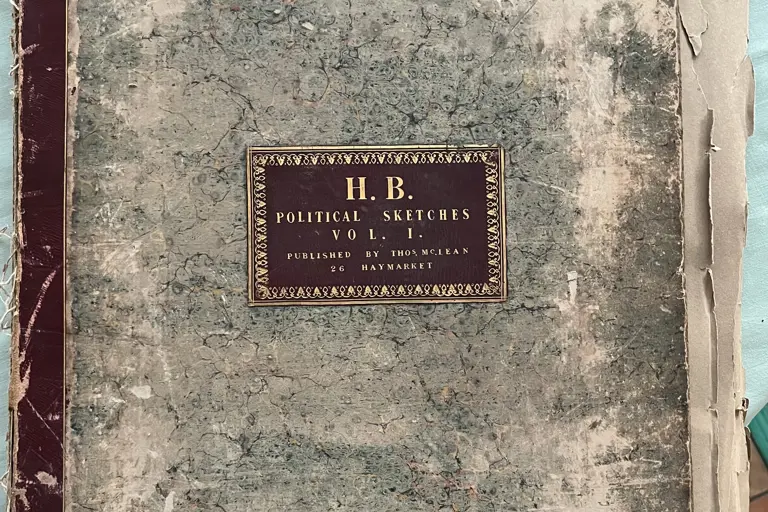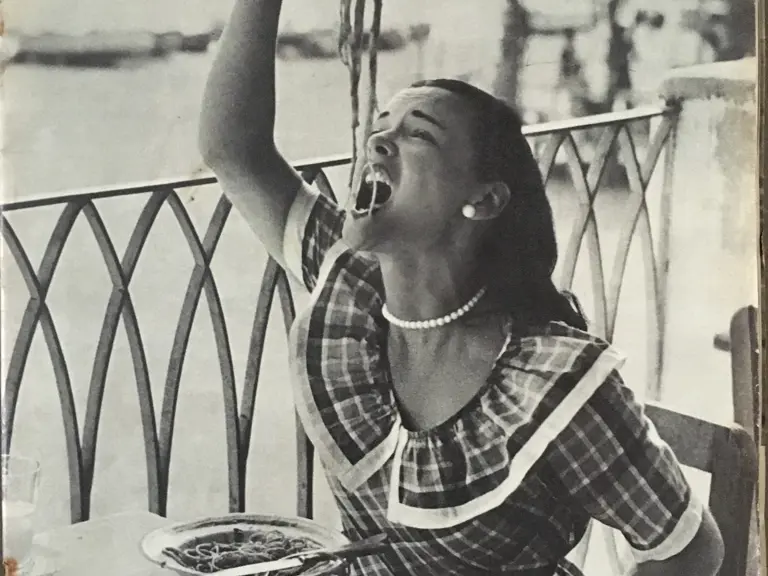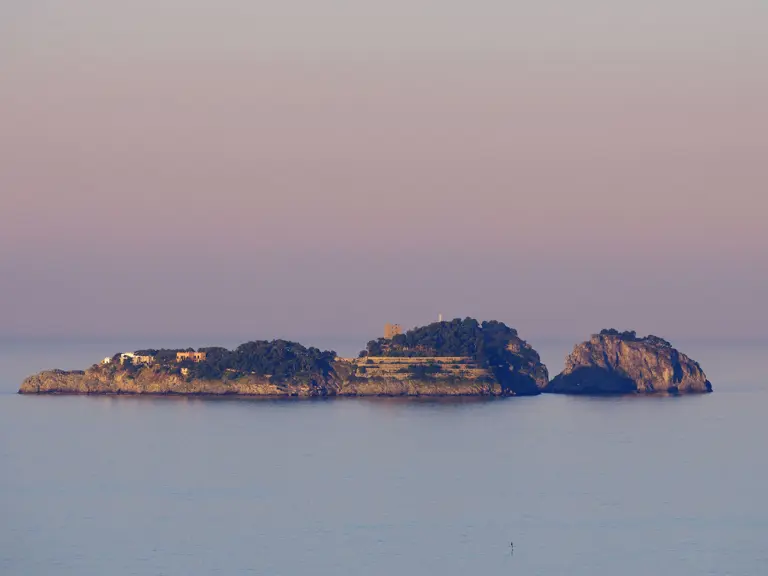SIRENUSE DETAILS: POLITICAL SKETCHES BY H.B.
13.03.2023 LE SIRENUSE
The inimitable Franco Sersale – one of the four siblings who turned what had been their family’s seaside villa into a small hotel in 1951 – was an avid collector of antique furniture, paintings and other artworks. He was also a lifelong anglophile with a wry sense of humour. So it’s no surprise that he developed a keen interest in British social and political satirical prints of the 18th and 19th centuries.
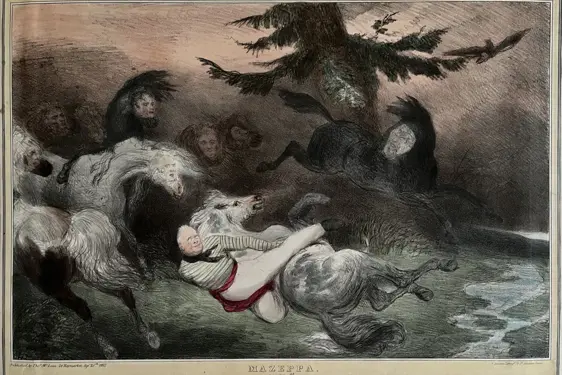
View
The ‘H.B.’ lampoons are part of Franco’s extensive collection of British satirical cartoons by artists ranging from Hogarth to Gillray. Commissioned for newspapers of the time, or as standalone prints, they used humour to expose political wheeler-dealing or point the finger at social ills. Regular guests of Le Sirenuse will be familiar with some of those that Franco had framed and hung in the hotel’s bedrooms and communal areas. But he bought many more – at auction or from antique print specialists – than he could possibly find a home for. The treasure trove of finely executed pen and ink lithographs in the battered and well-thumbed volume H.B. Political Sketches Vol. I was just one of the sources of the prints Franco scattered artfully around the hotel. Many more are still in boxes or drawers waiting to be rediscovered.
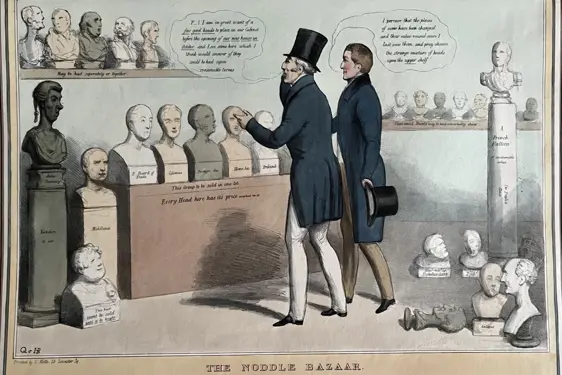
View
Hiding behind the initials ‘H.B.’ was a London-based Irish artist called John Doyle. He moved to London in 1822, aged 25, and was initially known for his equestrian portraits and hunting scenes. But in 1827, using the then relatively new printmaking process known as lithography, he began to produce a series of satirical prints on British government figures and political crises, one for every month that parliament was in session.
These were sold on a subscription basis before being gathered together by Thomas McLean, a London publisher, five years later, in the hefty volume on display here. By 1840, Doyle was rich enough to be able to buy himself a fashionable Hyde Park townhouse, but although he went on turning out his satirical prints for twenty-two years, his star waned from the mid-1840s on. Remarkably, the identity of ‘H.B.’ was for many years as closely guarded a secret as that of Banksy today. It was only in 1843 that Doyle revealed that he was the artist behind the satires – in a seventeen-page letter addressed to the prime minister of the day, Sir Robert Peel.
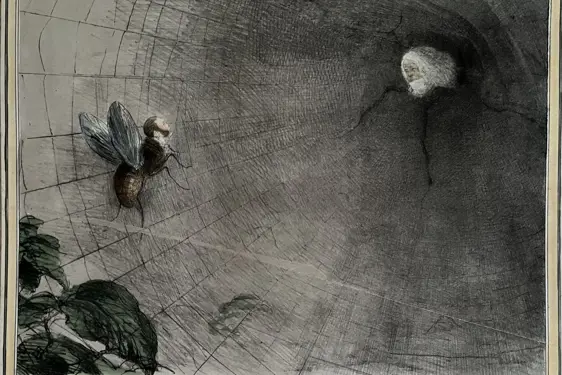
View
Unlike earlier political satirists, Doyle did not exaggerate the features of the politicians who were his stock-in-trade. He produced accurate likenesses – of their heads at least, though as the example above shows, their bodies were not always depicted quite so realistically. This lithograph. ‘A Venerable Spider & A Buzzing Fly’ shows wily veteran French statesman the Prince of Talleyrand, who served as the French ambassador to the United Kingdom from 1830 to 1834, catching the British Foreign Minister, Viscount Palmerston, in his web of intrigue.
But Doyle’s satires were mostly gentle, marked by arch irony rather than excoriating sarcasm. The example below is more affectionate than polemical, showing Tory statesman the Duke of Wellington – who served as British prime minister from 1828 to 1830 and again for a few weeks in 1834 – kept awake by the cares of state. The Duke’s ‘nocturnal reverie’ soliloquy is based on a similar speech voiced by the king in Shakespeare’s Henry V, about the “watch the king keeps to maintain the peace” – a.k.a. executive insomnia as a trade-off for a happy realm.
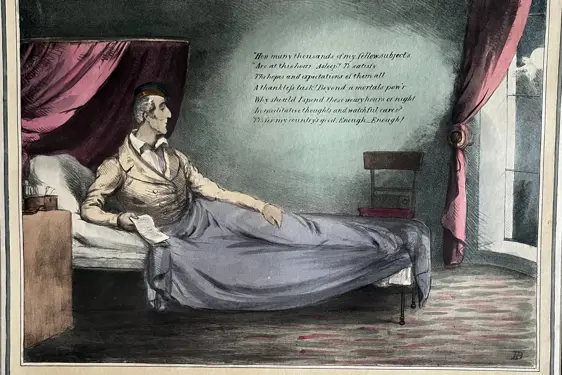
View
There’s one fascinating footnote we came across while researching Doyle’s life and career. Four of his sons themselves became artists or curators. One, the painter and illustrator Charles Altamont Doyle, was the father of Sir Arthur Conan Doyle. We like to think that Sherlock Holmes would have appreciated our unearthing of his creator’s grandfather’s book in our storerooms. It could be the start of a classic detective yarn…
Le Sirenuse Newsletter
Stay up to date
Sign up to our newsletter for regular updates on Amalfi Coast stories, events, recipes and glorious sunsets
